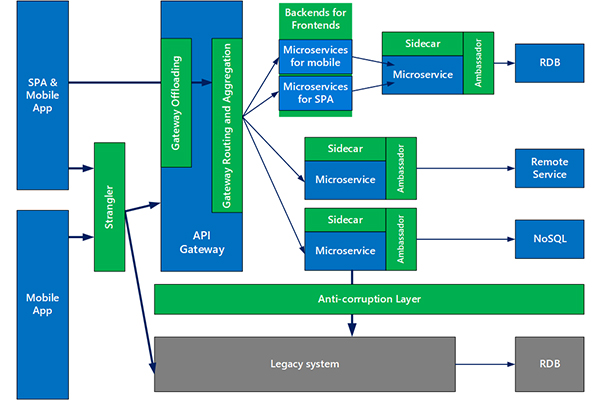Source – https://searchapparchitecture.techtarget.com/
Building upon years of momentum, architects are well in the swing of transitioning from the monolith to microservices. Here are three of the top trends they’ll face in 2021.
Throughout 2020, application architects sought new design methods and tools to help ease the transition from the monolith to a distributed architecture design — and they’re not done yet. Specifically, they are looking to solve issues surrounding consistency in distributed service management, incremental migration to microservices and service granularity.
Let’s take a closer look at some of these distributed architecture trends and examine how these shifts will affect the development landscape in 2021, including the microservices design patterns and tools that are top-of-mind for architects.
The modular monolith reigns
Despite the flexibility and scaling benefits associated with microservices, this type of architecture imposes significant hurdles upfront — specifically regarding observability, inter-service communication and complex deployment cycles. As such, architects must find a way to pursue microservices design patterns while still maintaining the dependability of their existing monolith. In 2021, architects will continue to pursue the modular monolith and establish bounded context by segmenting code, limiting dependencies and isolating data stores. This allows them to introduce the desired cohesion and loose coupling found in microservices, but avoid the headaches of managing multiple runtimes and asynchronous communication.
Loose coupling becomes essential
While a microservices design patterns demand a granular separation of services and responsibilities, development teams continue to apply traditional MVC patterns that demand tight component coupling. To successfully introduce distributed architecture design, more architects should make an effort to implement hexagonal architecture patterns in 2021. This pattern allows developers to create coarse-grained services that can gradually parse individual functions into individual services, but uses proxy components to spawn these services without affecting the underlying process logic.
Distributed services, centralized management
Teams that manage distributed systems must spend considerable time repetitively performing the same management tasks for hundreds of services, such as deployments, monitoring, logging and versioning. In an effort to eliminate waste, it’s likely that teams will increasingly adopt service templates and scaffolding tools in 2021. The hope is that these tools will promote coherence across collections of microservices by providing preconfigured service designs and enforcing standardized management practices.

 Starting: 1st of Every Month
Starting: 1st of Every Month  +91 8409492687 |
+91 8409492687 |  Contact@DevOpsSchool.com
Contact@DevOpsSchool.com

